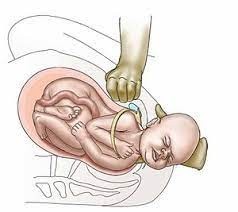A nurse is administering a magnesium sulfate infusion for a client with severe preeclampsia. The nurse knows that the goal of magnesium sulfate therapy is to:
Lower blood pressure in the hypertensive client.
Shorten the duration of the labor induction.
Prevent a boggy uterus and lessen lochial flow after delivery.
Prevent and treat seizure activity.
The Correct Answer is D
Magnesium sulfate is a medication commonly used to prevent and treat seizure activity in pregnant women with preeclampsia and eclampsia. It works by decreasing neuromuscular irritability and depressing the central nervous system.
Nursing Test Bank
Naxlex Comprehensive Predictor Exams
Related Questions
Correct Answer is D
Explanation
Magnesium sulfate is a medication commonly used to prevent and treat seizure activity in pregnant women with preeclampsia and eclampsia. It works by decreasing neuromuscular irritability and depressing the central nervous system.
Correct Answer is B
Explanation
Suprapubic pressure aids in the delivery of the fetal shoulders, and delivery of the fetal head. to control postpartum hemorrhage and to assess uterine tone after delivery.

Whether you are a student looking to ace your exams or a practicing nurse seeking to enhance your expertise , our nursing education contents will empower you with the confidence and competence to make a difference in the lives of patients and become a respected leader in the healthcare field.
Visit Naxlex, invest in your future and unlock endless possibilities with our unparalleled nursing education contents today
Report Wrong Answer on the Current Question
Do you disagree with the answer? If yes, what is your expected answer? Explain.
Kindly be descriptive with the issue you are facing.
